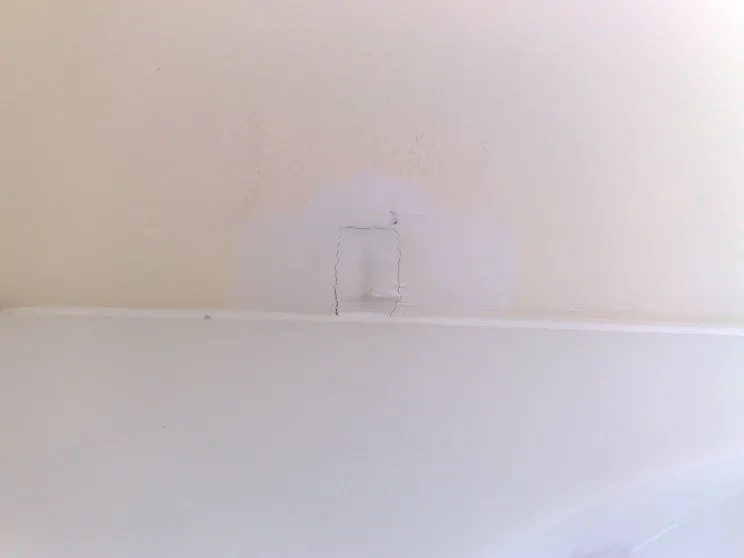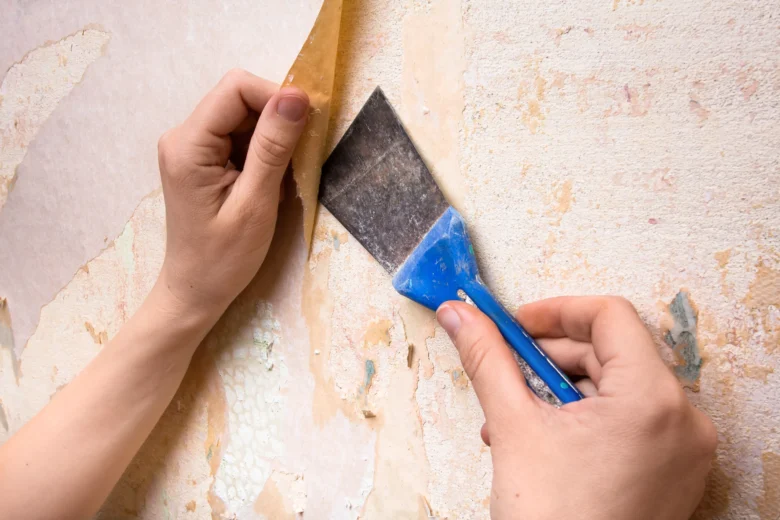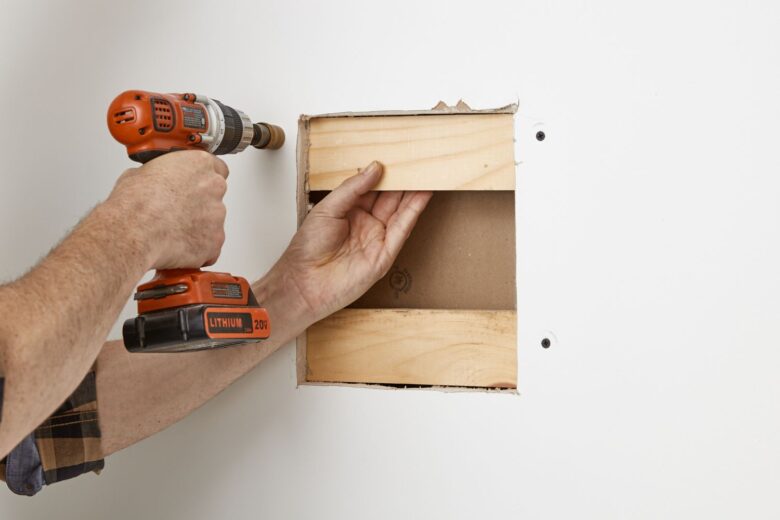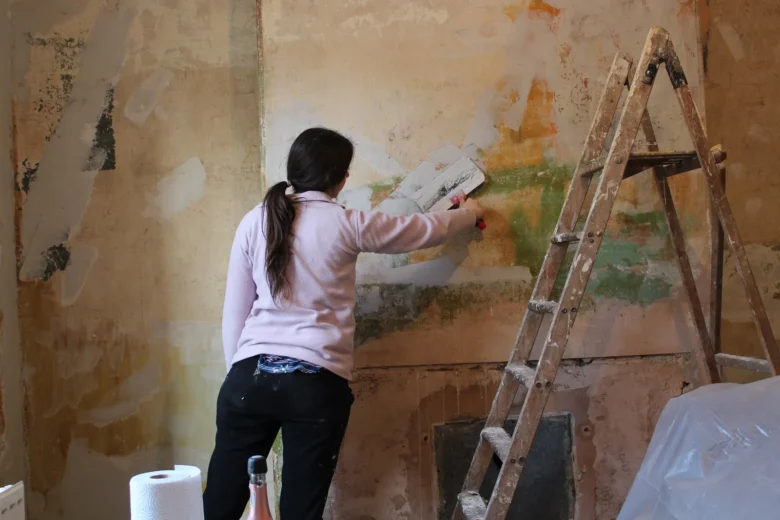Are you planning to paint your walls? If so, you need to make sure they are free of dirt and grease that can get into them when you apply the paint. There are several other things to consider when preparing interior walls for painting: Remove stains or marks from wallpaper, fill holes, patch cracks, and prepare plaster walls for painting.
Read on for a step-by-step guide to preparing interior walls before painting.
Contents
Remove Snags

Source: berratings.com
Preparing the walls sometimes tests attention to detail. First, remove all tape and staples with a sharp knife or scissors. It’s equally essential to scan the edges of the wall for dirt. These can be removed with a damp cloth or a small brush specially designed for drywall. If you’ve loose paint on your walls that needs to be removed, use an old toothbrush. Once that’s all done, it’s time to clean up!
If you’ve a whole room full of drywall that needs to be painted, but you don’t have the expertize or a helping hand, try hiring a house painting service which you can find here! It’s best to hire professionals who’ve experience with this type of work, because they know exactly what they’re doing.
Clean The Walls
Got a sponge and a mild detergent? Then go for it! Using cleaners that contain ammonia or bleach isn’t recommended, as they’ll damage the existing paint on the walls. Instead, you can use a soft cloth or sponge to wipe down the walls with water and gentle cleaners like dish soap or laundry soap (this can also help remove grease stains).
Oil-based paints might react with water and form fine scratches in your freshly painted surface if not removed beforehand. So, if you’re painting over an existing oil-based coating (like polyurethane), clean up any residue before applying your new colors!
Did we mention that all windows, doors and frames need to be cleaned? These should be washed down with warm water so they don’t crack when they dry after cleaning the interior surfaces of your room. If you plan on painting white walls, it’s extensive to make sure that there are no traces of dirt left behind from the previous scrubbing.
Remove Wallpaper (If Any)

Source: architecturaldigest.com
Removing wallpaper is no fun, but luckily we’ve got tips that can make it easier. There are several wallpaper steamers that soften the adhesive and remove old wallpaper. Once the wallpaper is removed, a wallpaper stripper can be used to remove the paint from the wall. Sand any remaining pieces of paper or fabric until they’re smooth with fresh paint.
Use a wallpaper scraper to scrape off any paper or fabric that’s stuck to the wall. This will allow you to remove all traces of the old decor before you start painting.
Spread the primer on all surfaces that need it, such as ceilings, floors, trim, doors, window sills, and any other areas that need to be protected from moisture damage during future renovations (around plumbing pipes, for example).
Filling Holes And Cracks
A wall is likely to have many holes and cracks in its surface if it’s been previously painted. In this case, it’s best to fill all holes and cracks with sealant or putty before you paint over them.
Prevention is better than cure. If there are no holes or cracks in the existing wall, it’s a good idea to apply some putty along the edges with an angled brush to prevent them from forming in future coats (as with water damage).
Wait until this mixture of putty and sandpaper powder or paste has dried thoroughly before proceeding with any painting work, such as sanding off any excess material left behind after applying the primer.
Patching Large Holes

Source: thespruce.com
You can use an old shirt or a piece of cardboard as a stencil. Make sure the stencil is large enough to cover the hole without overlapping with another area of paint you don’t want to damage. Sand your patch until it’s smooth and even, with no rough edges showing through the paint. If there are any cracks or holes that need to be patched before applying primer, now is the time to do it!
Apply the primer to all patched/cleaned/sanded surfaces and allow this coat(s) to dry thoroughly before proceeding. Don’t rush this process! If you’re applying multiple coats of primer at once, always start with one coat and wait several hours between coats to avoid the risk of losing coverage due to excessive drying time between successive coats. In case of painting bathroom walls, check if you have caulk between the wall and the bathroom sink or tub, remove it before painting so that you don’t get any of your new color on top of it.
Preparing Plaster Walls For Painting
Preparing plaster walls for painting is a bit more complicated than priming the surface. It’s important to know that plaster walls are made of various types of mixtures that are difficult to remove once they’ve been painted over.
Paint has an affinity for oil-based surfaces and will soak into the pores of the wall if left untreated. If the paint is to be applied directly to these surfaces, it’s best to prime them first to avoid ruining the finished look with water stains or bumps (and let’s face it, no one wants that).
Bonus tip: If you’re painting over wallpaper or other materials with similar porous properties, use a primer before you start painting to make the surface smooth!
Final Thoughts

Source: kezzabeth.co.uk
Before you start painting your walls, you should prepare them by removing all hardware and cleaning the surface of dirt and grease. Try using a rag with soap and water or spray cleaner on your walls. If there’s mold in the area you’re painting, you can remove it with a solution of hydrogen peroxide and water before proceeding with the rest of the process.
Be careful when preparing new drywall for painting, as these mistakes can lead to problems in future. It’s best to hire professionals who’ve experience with this type of work, because they know exactly what they’re doing.
We hope that this guide has made your life a bit easier. Have fun preparing your walls for painting.
